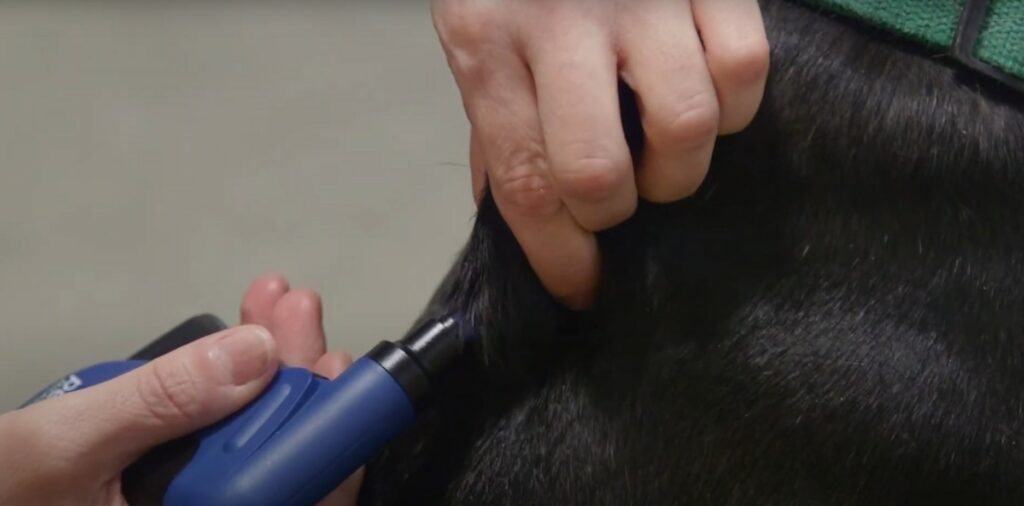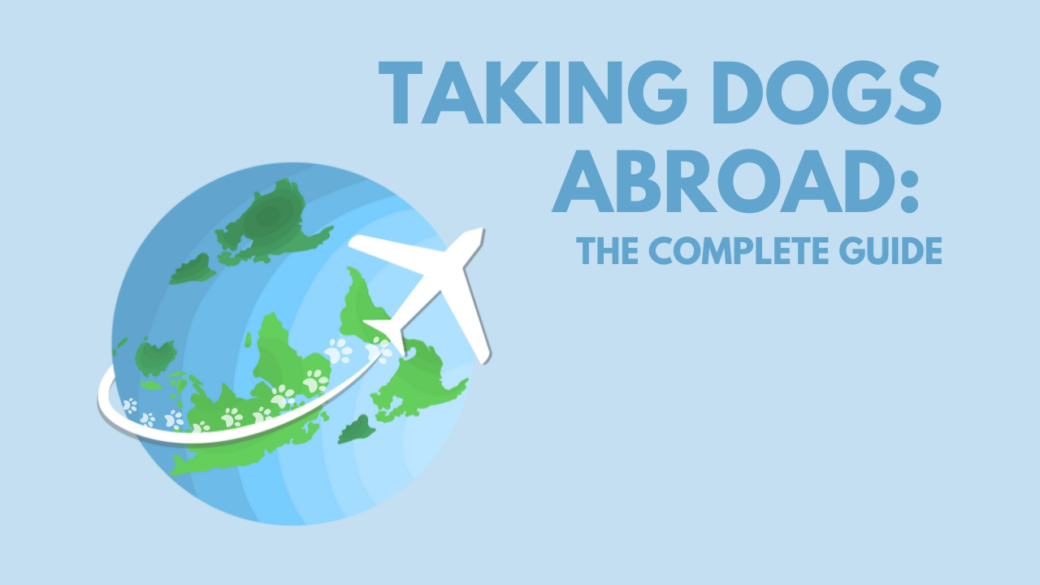Many dog owners enjoy holidays abroad, but leaving their pets behind can be a distressing experience. Finding a boarding kennel with availability on the chosen dates, planning the pet’s stay, and trusting someone else to look after your furry friend can make your stomach churn, so some pet parents choose to take their dogs with them on holiday instead.
Of course, taking dogs abroad comes with its own challenges. There are a lot of new regulations in place since Great Britain left the European Union, and most countries have their own rules on allowing visiting animals in.
So, what do you need to know when travelling overseas with your dog? This post will give you a comprehensive overview of the requirements.
Table of Contents
Are Pets Allowed to Travel Internationally?
Yes, in most cases, pets and assistance dogs are allowed to travel overseas with their owners. However, there are certain requirements pet owners should be aware of before travelling abroad with their dogs. Pets should be microchipped, have a pet passport or an animal health certificate, and receive a rabies vaccination and tapeworm treatment before travelling; this will vary depending on the country you travel to.
Before journeying, be sure to check the route; you must travel using an approved route. Travelling on approved routes is unnecessary when returning from the EU with assistance dogs or travelling back to the UK from other British countries, the Channel Islands, the Isle of Man, or the Republic of Ireland.
Can You Take Your Dog Abroad on Holiday?
As they can travel internationally, dogs can be taken on holiday abroad, assuming your accommodation accepts pets. If you do plan to take dogs abroad on holiday, you must check that your hotel, villa, etc., allows dogs on the premises.
Is International Travel Safe for Dogs?
With the proper preparations, international travel can be safe for dogs and other animals. Many people travel with their pets, both in the cabin and as cargo, without any issues arising.

Not all dogs enjoy international travel, though. It can be a stressful experience for dogs as airports, places, and other transport services are unfamiliar surroundings. The scents, sights, and noises can be distracting, but this can also overstimulate dogs, which can alter their behaviour; even the best-behaved dog can act differently when it is overwhelmed.
The dog’s health should also be considered before scheduling a flight.
Where Can You Take Dogs on Holiday Abroad?
According to the gov.uk, there are different rules for travelling with your dog to an EU country or Northern Ireland and countries outside of the European Union. However, if you consider these rules, travelling from Great Britain to a foreign country with your dog is possible.
When going on holiday, dog owners should think about the type of accommodation they wish to stay in. For most, self-catering holidays are the best option. Some of the most dog-friendly travel destinations for holiday-goers with self-catering vacation properties include Austria, France, Greece, Spain, Switzerland, and Turkey.
The rules for dogs travelling abroad will differ depending on the country you visit, so it is important to research the country’s regulations before travelling. For example, if you are travelling to an EU country and your pet passport was issued from an EU country or one of the countries below, it can still be used:
- Andorra
- Faroe Islands
- Gibraltar
- Greenland
- Iceland
- Liechtenstein
- Monaco
- Northern Ireland
- Norway
- San Marino
- Switzerland
- Vatican City State
Taking a Dog to an EU Country or Northern Ireland
When taking your pet or assistance dog abroad to countries in the EU or Northern Ireland, you must ensure you comply with the EU Pet Travel rules here and be prepared at least 21 days before your trip. As UK-issued EU pet passports are no longer valid in these countries, dog owners should obtain an animal health certificate for every trip they make with their pets. There are some restrictions on this document, however, such as:
- It is only valid for one trip.
- It must be used within ten days of being issued.
- It is valid for four months once you enter your destination country or when your pet’s vaccines expire, meaning you can stay in Europe for a maximum of four months.
- It cannot be used for onward travel to a non-EU country.
- It can only be used on the travel of non-commercial pets (dogs, cats, or ferrets).
- It can be used on a maximum of five pets.
Only if you are attending a competition, show, or sporting event can you take more than five pets with you to an EU country or Northern Ireland; this form of travel will require written evidence of event registration. If you plan on travelling abroad with more than five pets, please contact your vet for more advice on how to do this correctly.
Vet appointments will also be required to check your pet’s health and ensure it receives the necessary vaccinations or treatments. Your dog must be treated for tapeworm if you are travelling directly to Finland, Malta, Northern Ireland, Norway, or the Republic of Ireland.
Taking a Dog to the United States of America
With the USA a popular holiday destination, it’s no surprise that many British pet owners want to take their dogs abroad. This is often a longer flight than those to EU countries or Northern Ireland, but this doesn’t mean it will be unsuitable for your dog. Whether or not your dog will be allowed to travel in the cabin or must fly as cargo depends on the airline. If you would prefer to have your dog with you during the journey, you could consider a trans-Atlantic cruise ship.
The requirements for travelling from the UK to the US are similar to those for travelling to Europe. Rabies vaccination certificates were required until 2018, but this is no longer essential as the UK is considered rabies-free; some airlines still request this, so it would be wise to travel with proof of your pet’s rabies vaccination just in case.
What is Required When Travelling Abroad With a Dog?
Following the correct requirements when travelling abroad with your dog is essential, so you must ensure you have the proper documents and you are adequately prepared. The information provided below should be researched and readied before your trip:
Animal Health Certificate
Before leaving the EU, UK pets needed a valid pet passport to travel abroad to countries in Europe, but this changed after Brexit. Pet passports issued in Great Britain are invalid when travelling to the EU or Northern Ireland, and pet owners must obtain a pet’s animal health certificate. Up to five pets can be included on an animal health certificate.
An “official veterinarian” should sign the animal health certificate, so you must ask your vet if they can issue this. If not, you will need to find a vet that can. To receive a signed certificate, you will need to take documents proving your dog’s microchip date and vaccination history.
Your dog will require a new animal health certificate for each trip to the EU or Northern Ireland.
Microchipping
All dogs should be microchipped, following UK legislation. However, if your pet has not been microchipped, this will need to happen before or at the same time as its rabies vaccination. If not, the dog will need to be vaccinated again.
A pet’s microchip should have up-to-date contact details for the owner, and the microchip number should be put on the animal health certificate; it is up to the owner to ensure this is correct. If you require more information on microchipping your dog before a holiday abroad, click here.

Vaccinations and Other Treatments
A vet check should be planned before heading on holiday abroad. This will allow verification that your dog is in good health before travelling and all of its vaccinations are up-to-date. As mentioned before, dogs must be vaccinated against rabies before travelling to the EU or Northern Ireland. You are required to wait 21 days after the rabies vaccinations before travelling, meaning if the dog is vaccinated on the 1st of February, you can travel on the 22nd of February.
All vaccinations and boosters must be correctly recorded in the animal health certificate or pet passport.
Visiting the vet will also provide an opportunity for tapeworm treatment if you are travelling to Finland, Malta, Northern Ireland, Norway, or the Republic of Ireland, as previously stated. Tapeworm treatment should be given between 24 hours and 120 hours before the date of arrival; this will also be required on your return to the UK.
Insurance
Ordinary travel insurance is unlikely to cover your dog, but pet insurance might, depending on your selected coverage level. Sometimes, pet travel needs to be bought as an add-on to your existing insurance policy, so you will have to read through the policy documents or contact your insurance provider to find out.
Should You Take the Eurotunnel, a Ferry, or a Flight With Your Dog?
There are a variety of travel methods to choose from when holidaying abroad, and the method you choose will be a personal choice. Each travel method will have its own additional requirements for people and their pets to follow; this is why it is important to research preferable travel arrangements before your trip.
One big aspect that might affect your decision is toilet breaks. While flying doesn’t provide the opportunity for dogs to toilet, the Eurotunnel and ferries do. These travel methods allow dogs to exercise and relieve themselves at designated points, such as at departure areas or allocated outdoor deck areas. On the other hand, dogs might experience sea or car sickness using these travel methods.
No matter your travel option, you will still require official proof of your dog’s vaccinations, its microchip, etc.

Is Flying Stressful for Dogs?
Flying can be a stressful experience for many pets, but this will differ from dog to dog. For some dogs, it can be a traumatising experience and lead to health issues, especially if they cannot be kept with their owners in the cabin. You can begin preparations early to ease your dog’s anxiety before, during, and after the flight.
Some tips to reduce a dog’s flying-induced stress include:
- Avoiding flights during busy travel times or extreme weather.
- Researching the airline’s rules on pet travel beforehand.
- Ensuring your dog is used to being in its crate.
- Training your dog to follow commands.
- Exercising your dog prior to departure.
- Providing the dog’s last meal four to six hours before the flight.
- Keeping your dog well hydrated.
- Using calming products, such as oils or supplements.
- Packing familiar items, like favourite toys, in a carry-on bag.
Which Airlines are Pet-Friendly?
The airlines that are considered to be pet-friendly in the UK are listed below:
- Aeromexico
- Air Canada
- Air New Zealand
- American Airlines
- British Airways
- Emirates
- Iberia
- Kenya Airways
- KLM
- Qatar Airways
- Singapore Airlines
- Thai Airways
- TUI Group
Different airlines will have their own restriction on pets, such as whether or not animals can fly in the cabin or need to fly as cargo. You should check this before selecting your chosen airline, as it could influence your choice if your dog cannot fly in the cabin. At the same time, you should also research if your airline will require health certificates to prove your dog is fit to fly.
What Size of Dog Can You Take on a Plane?
Some airlines will only allow dogs weighing less than 8kg to fly in the cabin, with heavier dogs having to fly as cargo. However, this will depend on the airline you choose, as not all airlines allow pets.
It is also good to remember that dogs with shorter snouts, such as pugs and French bulldogs, are more likely than other breeds to experience respiratory issues, which could cause air travel to be dangerous.
To Sum Up
This article has shown that there is much to know before taking your dog abroad. It isn’t a simple scenario to manoeuvre, so being prepared and knowledgeable about your destination will help reduce the stress of your travel plans. You will need to begin preparations with plenty of time, especially if your dog requires tapeworm treatment to enter the destination country.
Other aspects to prepare include the pet’s animal health certificate, microchipping, vaccinations and boosters, and pet insurance. This can be a costly experience, but it is essential to keep your dog safe while they are abroad in unfamiliar surroundings.
But if taking dogs abroad doesn’t feel like the right choice for you, you should research the boarding kennels in your area two or three months before your travel date.

